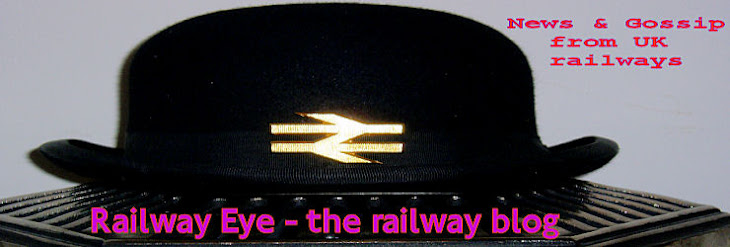So here is what the TSC actually said in their press release:
Good case for high speed rail to run to Birmingham and beyond, say MPs
There is a good case for a high speed rail network, linking London and the major cities of the Midlands, the North and Scotland says the Transport Committee.
Launching High Speed Rail – the report of the inquiry into high speed rail, including the Government’s proposal for HS2 – Committee chair Louise Ellman said,
“A high speed rail network, beginning with a line between London and the West Midlands, would provide a step change in the capacity, quality, reliability and frequency of rail services between our major cities.
“A high speed line offers potential economic and strategic benefits which a conventional line does not, including a dramatic improvement in connectivity between our major cities, Heathrow and other airports, and the rest of Europe.
“High speed rail may be a catalyst for economic growth, helping to rebalance the economy and bridge the north-south divide. But the Government must do more to promote local and regional growth strategies to ensure we get maximum economic benefit from high speed rail.
“High speed rail is affordable: HS2 will cost around £2 billion per annum over 17 years. Construction of a high speed rail network should start with the line between London and the West Midlands, as this is where capacity needs are greatest. But we are concerned that under current plans high speed rail lines won’t reach Manchester and Leeds for more than 20 years.
“The Government should also look at options to build southwards from the north and link to other lines such as the Midland Main Line. We see no reason why the Scottish Government should not begin work on a Scottish high speed line, to connect with the English network in due course.
“Investment in HS2 must not lead to reduced investment in the ‘classic’ rail network. We are concerned that the Government is developing separate strategies for rail and aviation, with HS2 separate from both. We call again for the publication of a comprehensive transport strategy.
“Investment in high speed rail has potential to boost growth but may have a substantial negative impact on the countryside, communities and people along the route. This must be better reflected in the business case for HS2 and future phases of the project. We would encourage the Government to follow existing transport corridors wherever possible.”
The Transport Committee sets out a series of recommendations on high speed rail:
- The Government must firmly commit to the Y network before seeking parliamentary approval for HS2.
- If the Government decides to go ahead with HS2, it should publish a summary of the financial case showing how the project is affordable alongside sustained investment in the classic network as well as its priorities for expenditure in the next Network Rail control period (for 2014-19).
- More information about the Y network (to Leeds and Manchester) such as the location of stations and environmental impacts should be published and strategically appraised before a final decision on HS2 is made.
- A full assessment of the case for building from north to south should be carried out as a priority.
- It is disappointing that a major strategic scheme is being designed and assessed to a large extent based upon the value of travel time savings, which are not universally accepted. This issue should be addressed in the updated economic case for HS2 with the implications for scheme design made explicit.
- The Government needs to make clear how HS2 fits into its wider aviation strategy, looking again at the case for a direct link to Heathrow in phase I on the assumption that the high speed rail network will extend to Manchester and Leeds. The costs and benefits of routing HS2 via Heathrow should be set out more clearly and there should be a clear statement about the status of possible complementary schemes such as those which would link Heathrow by rail to Gatwick or the Great Western Main Line.
- Better information should be provided to explain the Government’s rationale for its proposals for London termini and linkages, which are the most expensive and complex elements of HS2.
- Operating 18 trains per hour at 225mph are risk factors for which more technical information should be published. It is questionable whether the system proposed is being designed with sufficient margin for expansion.
- Claims that HS2 would deliver substantial carbon-reduction benefits do not stand up to scrutiny. However, HS2 will produce less carbon than an expanded motorway network or greater domestic aviation in the event of increased demand for inter-urban travel.
- Government support to enable the full potential of high speed rail to be realised, - including funding, for the development of regional and local strategies for transport, housing, skills and employment - should be recognised as a priority.
- When announcing its decision on HS2, the Government should provide a more explicit and comprehensive statement about likely patterns of service on the classic network once HS2 is operational.
- The Government should engage with Network Rail to identify whether there are affordable options to enable more peak-time capacity to be provided for Milton Keynes and Northampton commuters before HS2 opens.
- The Government should desist from disparaging opponents of high speed rail as NIMBYs. Both sides in the debate should show respect for each other and focus on the facts.
Railway Eye supports HS2, providing the Government shows it is serious about rebalancing the economy by starting construction in the North.
